Crossbill: how does a bird change if it only eats cones? (11 photos)
There are people in life who like to do everything the other way around. They have such an alternative nature, everything is against the rules. So, I suggest a nickname for such comrades "crossbill". This bird is a natural creature from the looking glass, it does everything differently than the rest of its fellow birds! 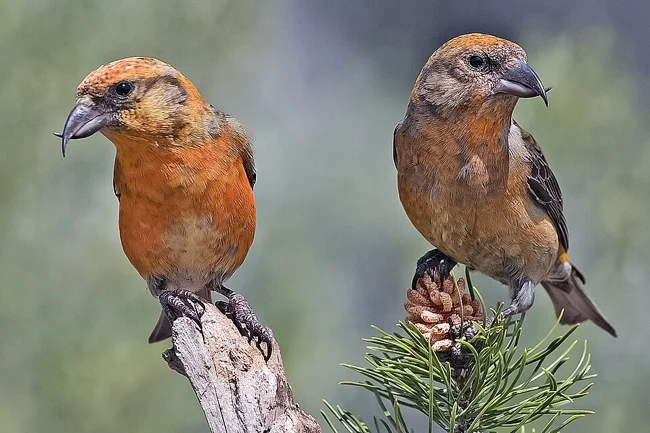
I walk with a crooked beak as a sign of protest against the bird order!
Where there is a coniferous forest - there is a crossbill. Its home: pine forests and dark spruce thickets. And it doesn't matter what continent! The birds have settled all over Eurasia and North America. The crossbill is slightly larger than a sparrow - 15-20 cm in length and weighing up to 50 g. A typical bird of the middle zone with such dimensions looks modest, without bright accents that attract attention. But not the crossbill! Not only are the males dressed in defiant red, but the females are also bright yellow! And this is a rarity among birds in principle, for females to dress up in some way like this. 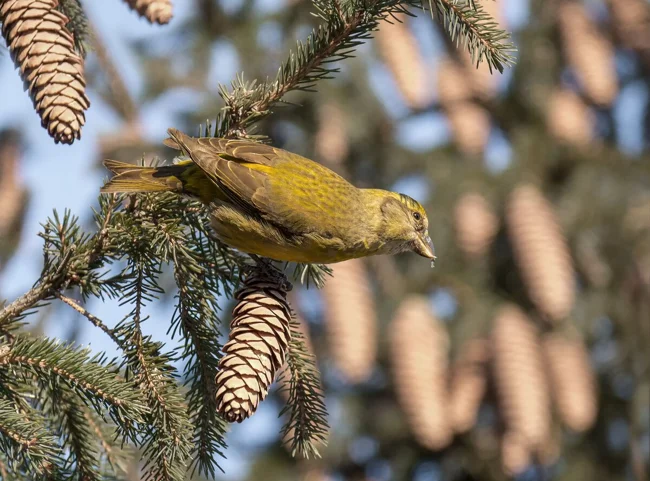
Who released a parrot into the taiga forest? (Female Crossbill) 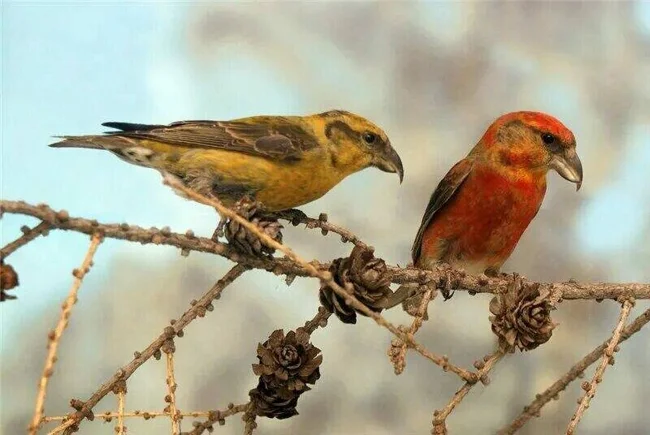
Honey, to become a traffic light we need a green bird (Female and male).
But let's not ignore the elephant in the room. The color of the feathers is not what first catches the eye. The beak is what really amazes in this bird! In other birds, a similar structure of the chirp would be considered a painful pathology. It was even named after our bird - crossbill. 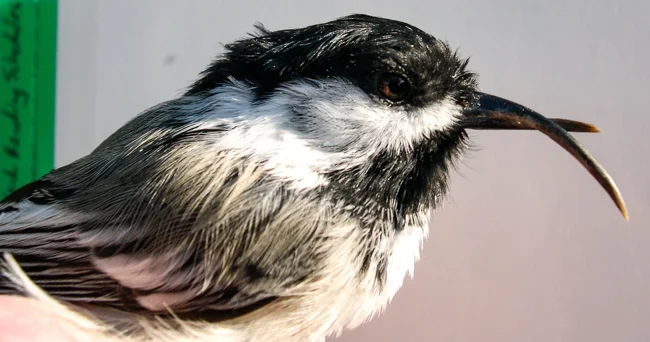
This is what crossbill looks like in a Moscow tit. Of course, such individuals do not live long.
It occurs due to a jaw injury, poor nutrition or genetic predisposition. The point is that the horny layer of the beak, instead of peeling off normally, outgrows its norm and bends crosswise. But the crossbill turned the game upside down. It made a feature out of a bug. 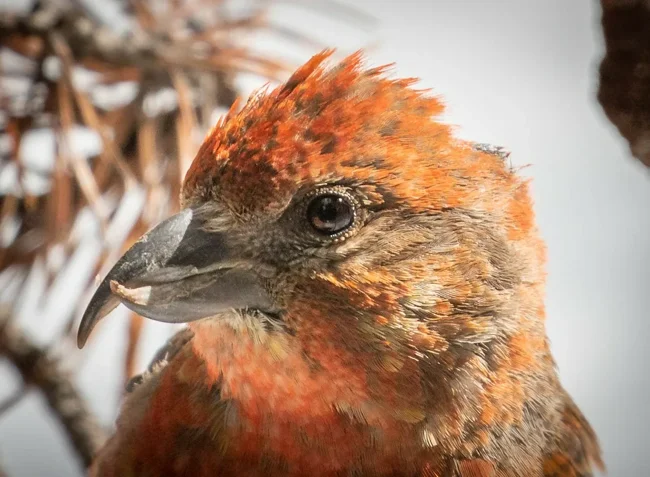
The cruciform bend of the upper and lower jaw is curved not only vertically, but also horizontally. The upper and lower mandibles are facing slightly different directions - the lower jaw will always be slightly turned to the side of the upper one.
If you have ever picked pine nuts out of a pine cone, you know how tedious and time-consuming this task is. Other birds do not even bother - too much effort is spent on getting to the delicacy. Meanwhile, coniferous tree seeds are an ideal product! Fatty, nutritious, and even with an antibacterial effect! 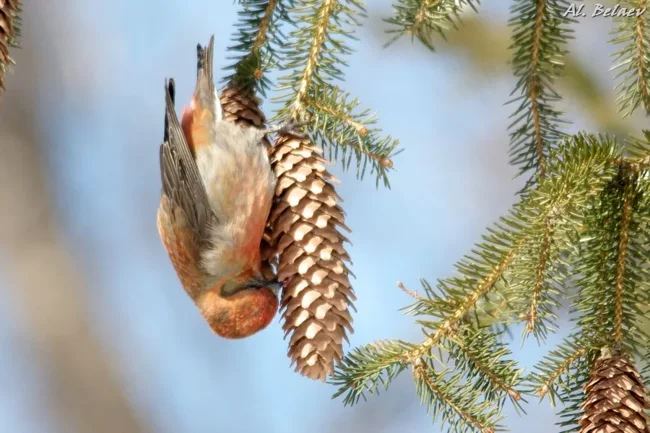
To gut a pine cone, you need to think like a pine cone. You need to become a pine cone!
The crossbill has become the only bird in the forest whose diet consists exclusively of conifer seeds. With its crooked beak, like pincers, the bird pushes apart the scales of the cones. And then - fishes out the seed with its tongue. Thus, the bird has taken possession of resources that no other bird can reach! All the cones in the forest that it finds belong exclusively to it! 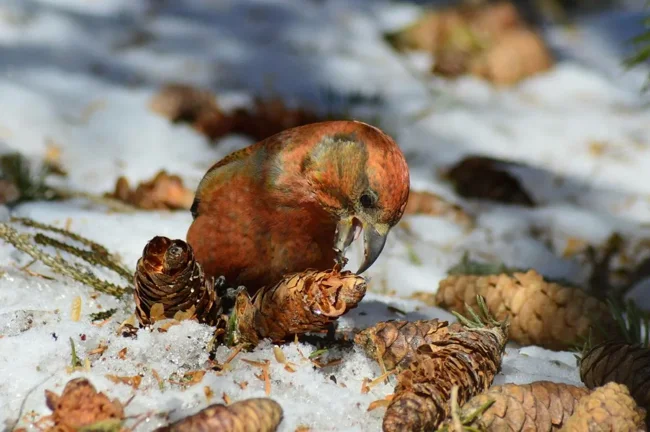
My darling!
The crossbill has occupied a unique niche. That is why it does not care about the well-known rules of ornithology. When do all normal birds think about a family? Of course, in spring and summer. When does the crossbill think about a family? Anytime! In autumn, on New Year's Eve, and in the Epiphany frosts. This is the only bird in our region that can feed chicks in the middle of winter! The desire to continue the family line directly correlates with the number of ripe cones on the family's territory. The more of them there are, the hotter the passions unfold in the nest. 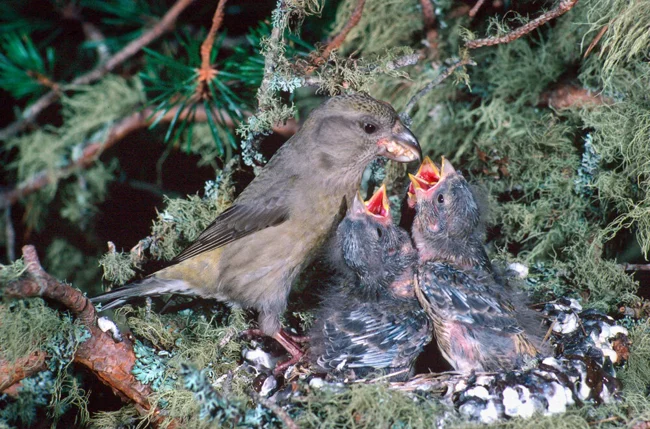
Crossbills live in small flocks, but when it's time to reproduce, the birds split into family pairs.
Despite the rebellious spirit, traditional ways of life reign within the crossbill family. The female is the keeper of the hearth. More precisely, the nest. She builds a structure on the top of a pine or spruce tree. She will lay 2 to 5 eggs in it. The male is the breadwinner. While his betrothed sits on the clutch and warms the chicks for two weeks, he opens the hunt for cones and brings seeds for ten. 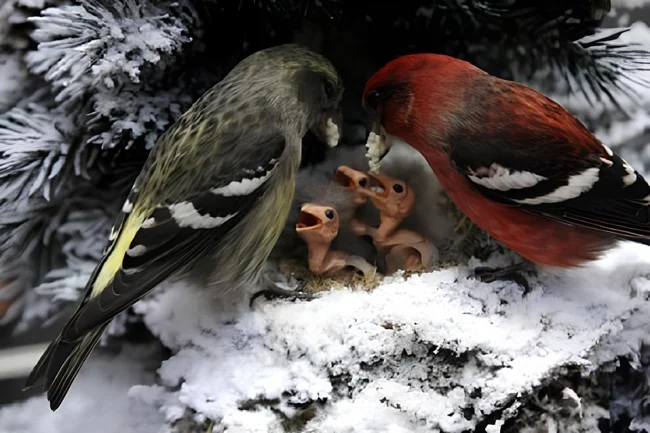
Even in the bitter cold, the love of mom and dad will warm you more than any stove! 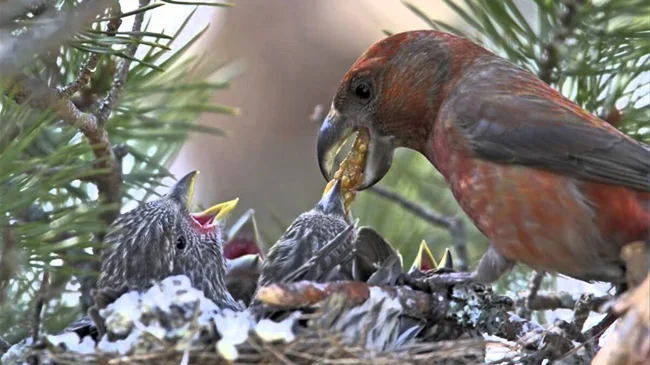
Burp from half-digested pine nuts. Yummy!
It is interesting that the chick is born with a straight beak. It begins to bend into a "cross" much later, closer to adulthood. At first, a small curvature forms there. The more often the young bird cracks seeds, the more crooked the "bite" becomes. But while the chick is not able to gut cones on its own, it flies after its parents with its tail. Having taken flight, the little ones follow mom and dad for another 1.5 months! 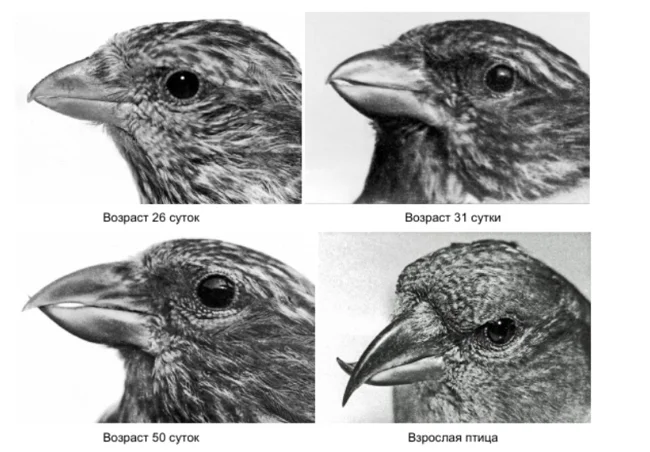
Which way the jaws will point is, by the way, a very interesting question. Many scientists come to the conclusion that the direction is determined genetically.
What can I say, the crossbill even meets its end incorrectly! Literally. After the crossbill's soul leaves this world, its mortal body does not normally commit to the earth for a long time. Over the years of actively eating cone seeds and close contact with coniferous trees, the crossbill is saturated with resin and other tannins. Instead of the typical bacterial decomposition into molecules, natural mummification occurs.

























